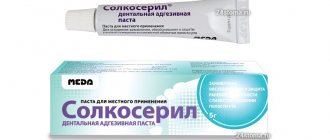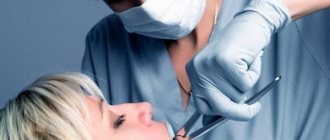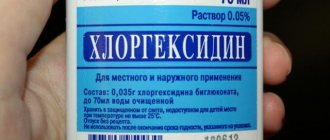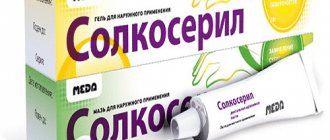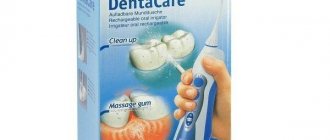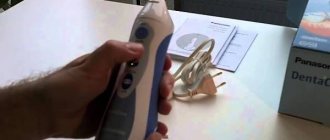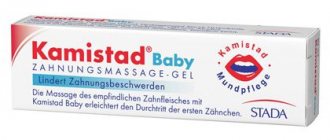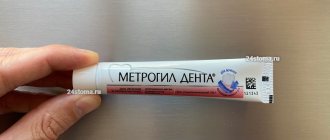Skin damage and wounds are always unpleasant. What can we say about trophic ulcers - companions of severe varicose veins, which are characterized by very sluggish and slow healing due to impaired tissue nutrition. Solcoseryl can help heal such difficult lesions, as well as burns, frostbite, and eye damage.
- Solcoseryl ointment as a face cream
- How to use Solcoseryl and Dimexide for wrinkles
In what forms is the drug available?
The manufacturer produces Solcoseryl in the form of ointment and gel for external use, as well as ophthalmic gel. In addition, this drug is available in injection form.
The active substance in all cases is calf blood extract - hemoderivat. Auxiliary components for each of the release forms are individual. Thus, in addition to the active substance, the solution contains only water for injection, and, for example, the manufacturer adds a number of ingredients to the ointment: white petrolatum, methyl parahydroxybenzoate, cetyl alcohol, etc.
What kind of medicine is Solcoseryl?
The drug has a beneficial effect on tissue metabolic processes. It improves tissue nutrition in case of damage, and also activates repair and regeneration processes.
Solcoseryl in injection form is used for extensive circulatory disorders (diseases of peripheral veins and arteries, strokes), ointment and jelly are used to treat ulcerative lesions and slow-healing wounds, and the gel is an ophthalmic agent. Thus, each of the release forms performs its own task of restoring damaged tissue.
The rate of absorption and distribution of the drug in the body, as well as the route of its elimination, cannot be determined by methods usual in pharmacology due to the characteristics of the active substance.
According to the results of a study of the drug on animals, the pharmacological effect develops within half an hour after the bolus injection. The therapeutic effect lasts for 3 hours.
Solcoseryl ointment: instructions and application diagram
Pharmacological action of the drug - as we said above: the active substance of the ointment is deproteinized (devoid of protein) hemodialysate, which contains a spectrum of low-molecular components of cell mass and blood serum of dairy calves. Clinical studies have shown that thanks to this composition, Solcoseryl ointment has a wound-healing, regenerating, antihypoxic, membrane-stabilizing, angioprotective, and cytoprotective effect on damaged tissues.
In simple terms, this means that the drug has the following properties -
- accelerates wound healing (by about 30%),
- stimulates the proliferation of fibroblasts responsible for collagen synthesis,
- stimulates collagen synthesis in young growing tissues,
- activates metabolic processes in cells (increases oxygen consumption by cells, stimulates the transport of glucose into cells), which together allows damaged cells of the body to regenerate and recover faster.
Solcoseryl ointment: official instructions for use (download in PDF)
Scheme and features of application –
Solcoseryl ointment should be applied in a thin layer directly to the wound surface 2-3 times a day. Before applying the ointment to the wound, it is necessary to treat it with an antiseptic solution using a clean gauze swab moistened with an antiseptic solution. After this, you need to wait until the wound dries and apply ointment. As antiseptics, you can use 3% hydrogen peroxide or antiseptic solutions -
- Chlorhexidine solution,
- Miramistin solution.
Important : remember that you should not apply the ointment to infected wounds, as well as fresh wounds with wet discharge! For wet wounds, Solcoseryl gel can be used, and after the wound dries and becomes covered with granulations or crusts, you can already switch to the ointment form of Solcoseryl. The latter, in addition, contains fatty components that will form a protective film on the wound surface (24stoma.ru).
After applying the ointment (if necessary), the wound can be covered with a gauze bandage. The use of the ointment should continue until its complete epithelization. If the healing of the wound has occurred with the formation of scar tissue, then in order to reduce the scar and make it more elastic, it makes sense to immediately start using a special cream for scars and scars.
Indications
For each release form of Solcoseryl there are individual indications.
In the form of injections, the drug is prescribed when a patient is diagnosed with:
- occlusive peripheral artery disease grade 3 or 4;
- disturbances of venous blood flow with trophic lesions;
- strokes and traumatic brain injuries, which led to disruption of metabolic processes in the brain.
Ointment and gel for external use are used in complex treatment:
- minor abrasions and wounds;
- mild to moderate burns, frostbite;
- difficult-to-heal skin lesions: trophic ulcers, bedsores.
Ophthalmologists recommend the use of Solcoseryl eye gel to patients for the treatment of:
- injuries of the cornea and conjunctiva, their erosive lesions;
- scars after ophthalmological operations;
- eye burns of various types;
- dystrophic lesions of the cornea.
In addition, this gel is indicated for use in case of discomfort when wearing contact lenses and to reduce the time of getting used to them.
Side effects
The use of an injection solution in rare cases can lead to the development of allergic reactions, including anaphylactic shock. In this situation, you should immediately stop using the drug and prescribe symptomatic therapy in the form of antihistamines.
In addition, the process of performing the injection itself can be painful for the patient due to the potassium it contains.
When using the ointment, some patients may experience a burning sensation at the site of application.
Solcoseryl eye gel may cause short-term irritation, which is not an indication to discontinue treatment. The development of allergic reactions when using external forms of the drug is extremely rare.
Solcoseryl anti-wrinkle ointment: reviews
Sometimes patients use Solcoseryl facial ointment for cosmetic purposes to get rid of wrinkles.
The logic here is clear - since the drug increases the proliferation and activity of fibroblasts and leads to an increase in collagen production in damaged skin tissues (in wounds), then its regular use should probably lead to an increase in collagen production in healthy, undamaged skin. However, when using Solcoseryl ointment for wrinkles, reviews from cosmetologists indicate the absence of an anti-aging effect. The fact is that the drug affects the production of collagen and the proliferation of fibroblasts exclusively where the skin tissue has been damaged. As soon as the process of tissue restoration ends (and the young granulation tissue that has arisen at the site of damage turns into mature connective tissue), the effect of the drug stops.
However, long-term use of Solcoseryl ointment for the face (given the content of a fatty substance in it) can moisturize the skin, making it a little more elastic. But this does not occur due to an increase in collagen content, but due to a fatty film on the surface of the skin, which prevents the evaporation of moisture and therefore makes the skin a little more hydrated. At the same time, in patients with acne, the ointment can also cause an exacerbation of acne and pimples (due to the Vaseline content).
To stimulate collagen production in aging skin, the following 2 types of products are most effective (for arguments and clinical studies, see the links below) –
- products with retinoids,
- fractional lasers.
Recommendation: if you are looking for a cream both to improve skin regeneration and to significantly increase its hydration, a good option would be the “Bepanthen for dry skin” cream. It contains 5% dexpanthenol (a precursor to vitamin B5, which enhances regeneration), as well as well-moisturizing components such as the emollient “lanolin” + “D, L-pantolactone”. Apply 2 times a day, including on the moving parts of the eyelids. After a single application, moisture remains throughout the day. The cost is only 950 rubles per 100 ml tube.
Mode of application
Solution
Solcoseryl in the form of a solution is recommended to be administered intravenously slowly in the form of an injection or by drip, having previously diluted it with saline solution or 5% glucose solution. If intravenous administration is difficult, intramuscular injection is allowed.
For the treatment of venous insufficiency, the drug is prescribed for up to a month, combining it with the application of an external gel or ointment to the area of trophic ulcers.
Patients who have suffered a stroke are prescribed a course of treatment with Solcoseryl for 5 weeks. When treating traumatic brain injuries, short courses lasting 5 days are prescribed.
Ointment and gel
Ointment and gel for external use are applied directly to the wound. Before using them, the wound surface is thoroughly disinfected. In the presence of purulent discharge, surgical treatment may be required.
The gel is used to treat wet, fresh wound surfaces. When the affected area begins to epithelialize, granulation tissue appears and the wound dries out, you should switch to using Solcoseryl in the form of an ointment.
The course of treatment with external forms of the drug is carried out until the wound surface is completely healed and a scar is formed.
Ophthalmic gel
The eye gel is instilled into the conjunctival cavity 3-4 times a day, one drop at a time. In some cases, it is possible to use the drug hourly. The course of treatment lasts until complete recovery.
Solcoseryl ointment – price in the pharmacy, composition analysis
You will not like the cost of this drug. If 1-2 years ago it could be bought for 500-700 rubles, now the price for Solcoseryl ointment in a pharmacy will be from 2600 to 3000 rubles. This cost is indicated for 2022 (and the drug is not available in many pharmacies), but below we will also talk about cheaper indirect analogues of this drug. Solcoseryl in the form of an ointment is available in aluminum tubes of 20 g and is sold in pharmacies without a prescription.
Solcoseryl ointment: composition
| Active substances (in 1 g of ointment) – → deproteinized dialysate from the blood of healthy dairy calves (in terms of dry matter). | 2.07 mg |
| Excipients - cholesterol, cetyl alcohol, white petrolatum, distilled water, as well as preservatives - methyl parahydroxybenzoate (E 218) and propyl parahydroxybenzoate (E 216). |
Composition analysis - the main and only active component of this drug is a deproteinized dialysate from the blood of dairy calves. This substance is very rich in low molecular weight organic compounds - amino acids, glycolipids, as well as oligopeptides and nucleosides. All these components, acting on damaged tissues, accelerate the healing processes in them. Studies have shown that the rate of regeneration when using this drug increases by approximately 30%.
Due to the large amount of organic components in the composition, the use of preservatives is also required. These are E 218 and E 216 (methyl parahydroxybenzoate and propyl parahydroxybenzoate), which can be classified as parabens. You need to pay attention to this point if you have allergic reactions to cosmetics or oral hygiene products, or if you have increased allergies in general.
Solcoseryl: analogues
It is impossible to find analogues for Solcoseryl ointment in Russian pharmacies, because the only drug with a similar composition, Actovegin ointment, is no longer imported into Russia. But there are several drugs with a completely different composition that can also speed up the healing of skin damage. We are talking about scratches, abrasions, cracks, cuts, wounds, minor burns, bedsores, etc. If there are wounds, a doctor should prescribe such drugs (after examining the wound and determining the risk of infection).
Among drugs for external use that accelerate wound healing (drugs from the “regeneration stimulants” group), we can recommend the following drugs:
- OLAZOL – the drug is made on the basis of chloramphenicol, sea buckthorn oil and benzocaine (anesthetic), and it is produced in a convenient aerosol form. It not only accelerates wound healing, but also has an antimicrobial and analgesic effect (hence Olazol is also suitable for wet, infected wounds). In turn, Solcoseryl ointment does not have an antimicrobial effect, and therefore it can only be applied to clean, dry wounds. The cost of the drug is only about 220 rubles.
- BEPANTEN –This line of drugs contains 5% dexpanthenol - a precursor of vitamin B5, which stimulates skin regeneration. If you have an uninfected dry wound under a crust (without a wet discharge), then any of the following forms of the drug will suit you - Bepanten cream or Bepanten plus cream. These drugs are usually applied 2 times a day - rub in with gentle massaging movements.
But if we are talking about wet wounds, which always have a risk of infection, only Bepanten Plus cream is suitable for you (the same version of the drug is preferable for cuts, scratches and abrasions). The cream contains dexpanthenol + antiseptic chlorhexidine 0.5%, which provides a pronounced antimicrobial effect. On wet wounds, the drug is applied on turundas under a bandage - 2 or more times a day, but shallow cuts and scratches can be treated openly. The cost of the Bepanten line of drugs ranges from 400 to 470 rubles per 30 g tube (there are also tubes of 50 and 100 g).
- METHYLURACIL ointment - this drug is also capable of slightly accelerating the regeneration processes of wounds on the skin, but much weaker in comparison with Solcoseryl ointment.
The only advantage of the drug is its very low price (a 25 g tube costs only 50 to 100 rubles). For dry, uninfected wounds, apply and rub in the product using gentle movements. If we are talking about moist, uninfected wounds, then the drug is applied on the wounds under a bandage. The frequency of changing dressings will depend on the depth/area of the wound surface, the amount of wet discharge from the wound, etc. Methyluracil ointment does not have an antiseptic effect and therefore there is a risk of suppuration of wet wounds when using it (to reduce the risk of suppuration, it is necessary to pre-treat the wound with antiseptics).
